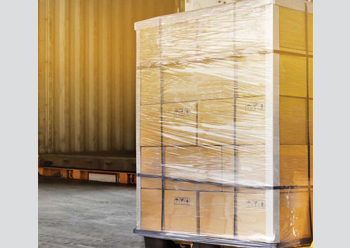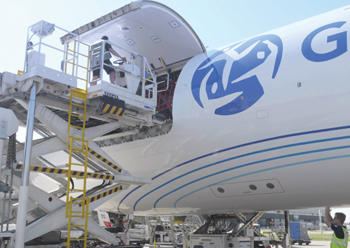
 Traceability can help companies develop a powerful competitive advantage
Traceability can help companies develop a powerful competitive advantage
For more than a century, businesses have honed highly efficient, linear supply chains. Raw materials flowed in one direction, were transformed into a product, used, and ultimately discarded in a waste heap. That approach now puts a firm’s competitiveness at risk.
To ensure supply in an increasingly volatile business landscape, companies need more resilient networks. Fast-changing consumer preferences and customisation require increased flexibility and speed. Also, investors, consumers, and governments expect more sustainable products and processes – with certifications to prove companies’ claims. Winning in the coming decade will require a transparent and circular value chain – one that reduces or reuses materials and remanufactures or recycles products, thereby lowering cost and creating less waste.
It is a profound paradigm shift. And the technology is already available to trace each raw material that goes into a product and follow how a product is used and where it is discarded. In fact, digital traceability is enabling companies to meet and balance a broader set of business objectives, including efficiency, resilience, responsiveness, and sustainability. It allows companies to redefine the boundary of operational excellence and set aspirational new goals. How does it help?
1. Companies are able to follow products and goods as they move along the value chain and glean information about the provenance of inputs, supplier sourcing practices, and conversion processes.
2. Companies can make predictions, run scenarios, and optimise operations.
3. Leadership teams serve customers better, identify unnecessary resource consumption, respond faster to changes in demand, and fulfill orders efficiently.
4. Leaders are able to identify strategic value chain opportunities, innovate faster, minimise the impact of internal and external disruptions, and certify sustainable processes and products.
5. Companies experience higher revenue growth, lower costs, increased market share, better returns on investment, and overall improved stakeholder returns.
Traceability leaders will also help shape the standards and regulations in their sector. Firms that do not invest in traceability will be more vulnerable to supply chain disruptions and allegations about product safety or provenance. In fact, across most industries and sectors, we are already beginning to see companies with traceable supply chains start to outrun competitors with limited visibility.
 |
|
Shariff |
Technologies are evolving
In the coming decade, we expect firms to cluster around two different performance curves: a higher-performance curve for companies that invest in traceability and a lower-performing curve for those that lack traceability.
Bain’s recent Global State of Traceability survey, a consultation with 150 senior supply chain leaders, shows that 68per cent of executives view traceability as “very or extremely important.” But many leadership teams have found implementation painfully complex. While firms are investing to improve traceability, 58 per cent have just begun the journey and only 15 per cent are capturing value at scale.
A three-pronged approach: First, companies explore how traceability technologies can lay the foundation for advanced supply chain performance.
Second, and often in parallel, they build a community of leaders, enablers, and potential partners to learn from. Sharing successes and failures improves performance across the value chain.
Third, they partner with regulators and policymakers to help inform and shape government proposals that will support and accelerate sustainability.
t\The link
We are sometimes asked about the connection between sustainability and traceability. This is a crucial point, and it’s often misunderstood. Traceability is the ability to follow materials from the beginning of the supply chain to the customer who purchases a product. With this data and information, traceability plays two roles that support sustainability:
1. Provides visibility on inputs and processes across the value chain; and
2. Offers the source information for provenance and sustainability certifications.
Deploying solutions
The first step is determining where tracing will generate the greatest value for the company. Leadership teams that fail to focus their investment will risk overwhelming their value chains with complexity. They are also likely to overinvest. Answering a few key questions can help leadership teams choose traceability applications that will pay big dividends:
• What is the strategic context for your industry, and what near-term and long-term goals are you trying to achieve?
• Which processes to a product do customers or regulators care about most?
• What new capabilities would deliver a competitive advantage in terms of unit economics, resilience, or sustainability?
• Where could a circular value chain create new business opportunities?
Leadership teams can determine how fast they need to move by assessing the company’s starting point and competitors’ commitment to traceability. That approach makes sense for firms striving to catch up from behind and for those jockeying to stay ahead. It will also help identify potential ecosystem partners, which will help strengthen the competitive advantage of individual companies and the community ecosystem. The companies that build the best value creation model linked to traceability will outperform the competition. In the future, all companies are likely to have similar access to traceability data but the winners will be those that wield the data skillfully.
The pressure is growing on leadership teams in every industry to improve sustainability, performance, and resilience in a volatile global economy. Traceability can help companies achieve all three goals and develop a powerful advantage. The rewards of getting it right are substantial. Companies that build robust traceability capabilities will be able to deliver the right product to the right place at the right time with the right level of customisation and speed—all at a competitive cost. They also will be in a position to meet stakeholders’ key sustainability demands and regulatory requirements. And they will have greater resilience to respond to supply and demand shocks. Those capabilities will deliver strong growth and profits and enable new business models.

















